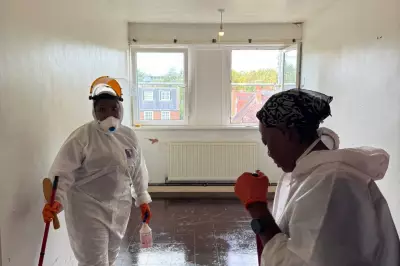
A young mother from the UK has revealed how her family's rented home became a toxic health hazard, with doctors linking her debilitating illness to rampant black mould infestation throughout the property.
The tenant, who wishes to remain anonymous, described waking up to walls covered in thick black mould that reappeared within hours of cleaning. Despite repeated complaints to her landlord, the dangerous fungus continued to spread through bedrooms, living areas, and even children's spaces.
Health Crisis Linked to Housing Conditions
Medical professionals have directly connected her deteriorating health to the mould exposure. The mother suffers from chronic respiratory issues, persistent fatigue, and other symptoms that significantly impact her quality of life.
"I've been constantly unwell for months," she explained. "Doctors confirmed what I suspected - the mould in our home is making me seriously ill. We're living in a health hazard."
Nationwide Problem With Rental Properties
This case highlights a growing concern across the United Kingdom regarding substandard rental accommodation and its impact on tenants' health. Damp and mould problems affect thousands of households, particularly in older housing stock and poorly maintained properties.
Housing advocates warn that many tenants remain unaware of the health risks associated with prolonged mould exposure, which can include:
- Respiratory problems and asthma exacerbation
- Allergic reactions and immune system issues
- Chronic fatigue and persistent headaches
- Increased risk of infections
Legal Rights and Tenant Protection
Under UK law, landlords have a legal responsibility to address damp and mould issues that affect tenants' health and safety. The Homes (Fitness for Human Habitation) Act 2018 provides tenants with recourse when landlords fail to maintain acceptable living conditions.
Environmental health officers can serve improvement notices on landlords who refuse to address severe mould problems, with potential penalties for non-compliance.
This case serves as a stark warning about the hidden health dangers lurking in damp properties and the critical importance of addressing mould issues promptly.





